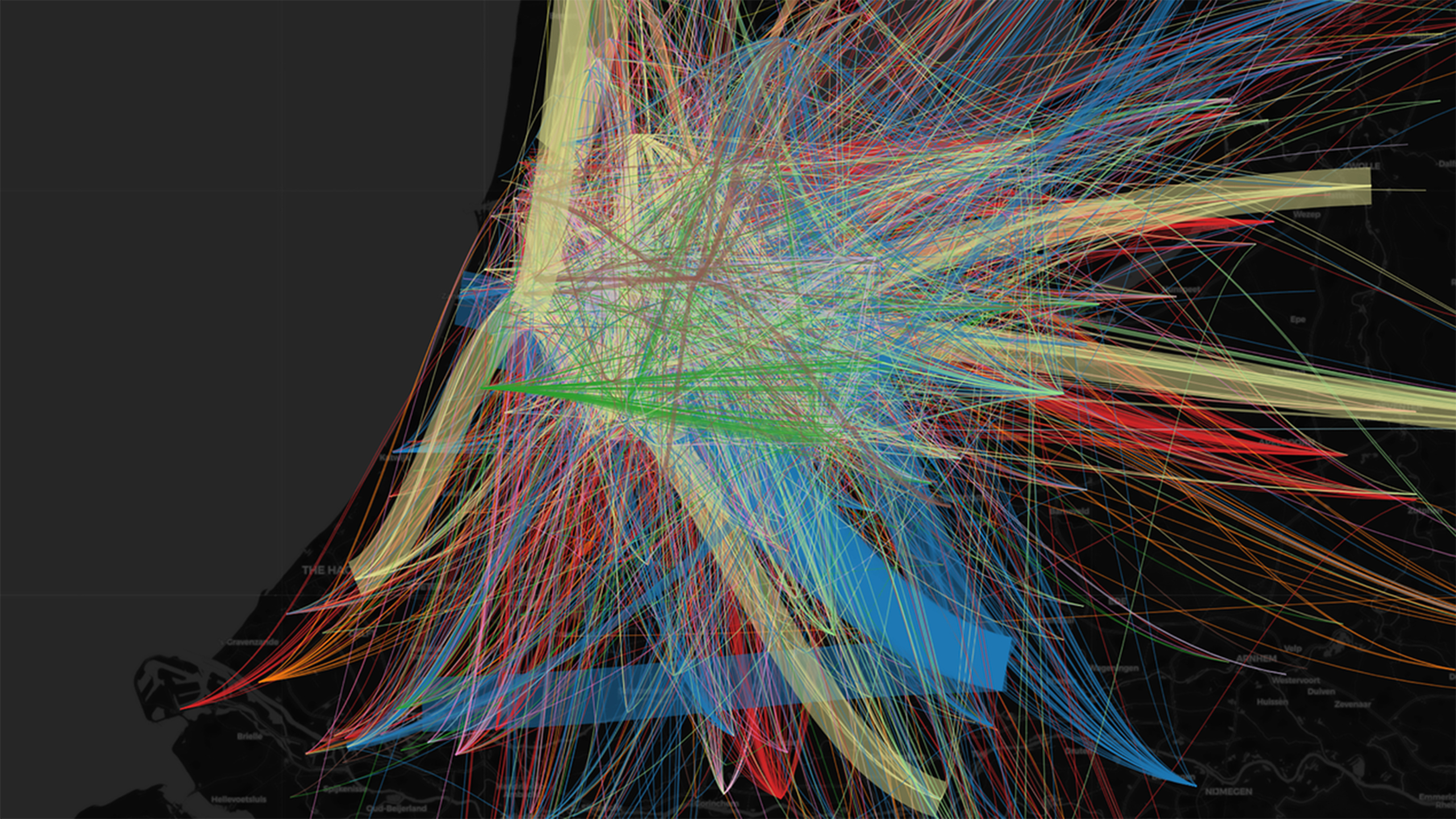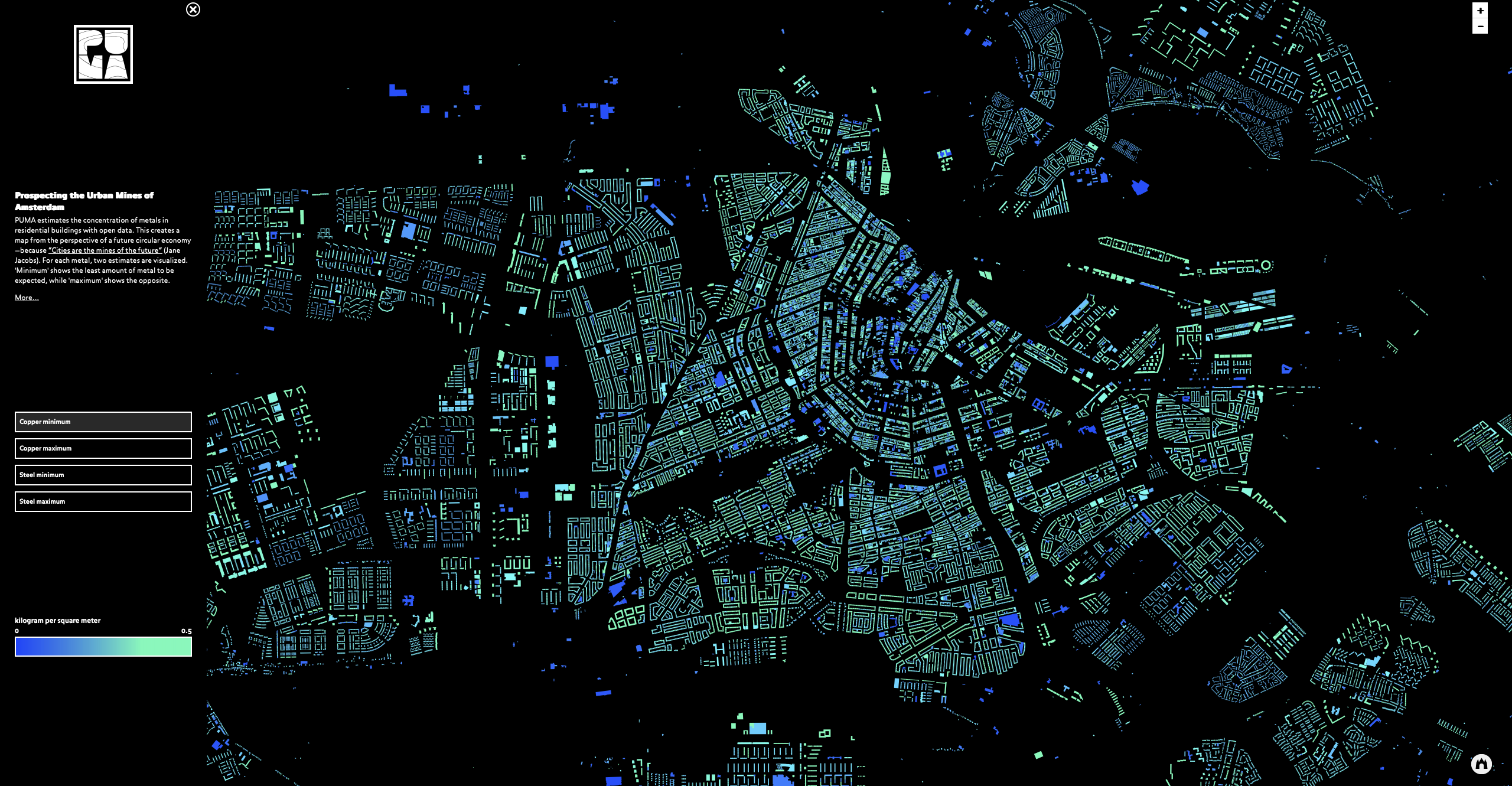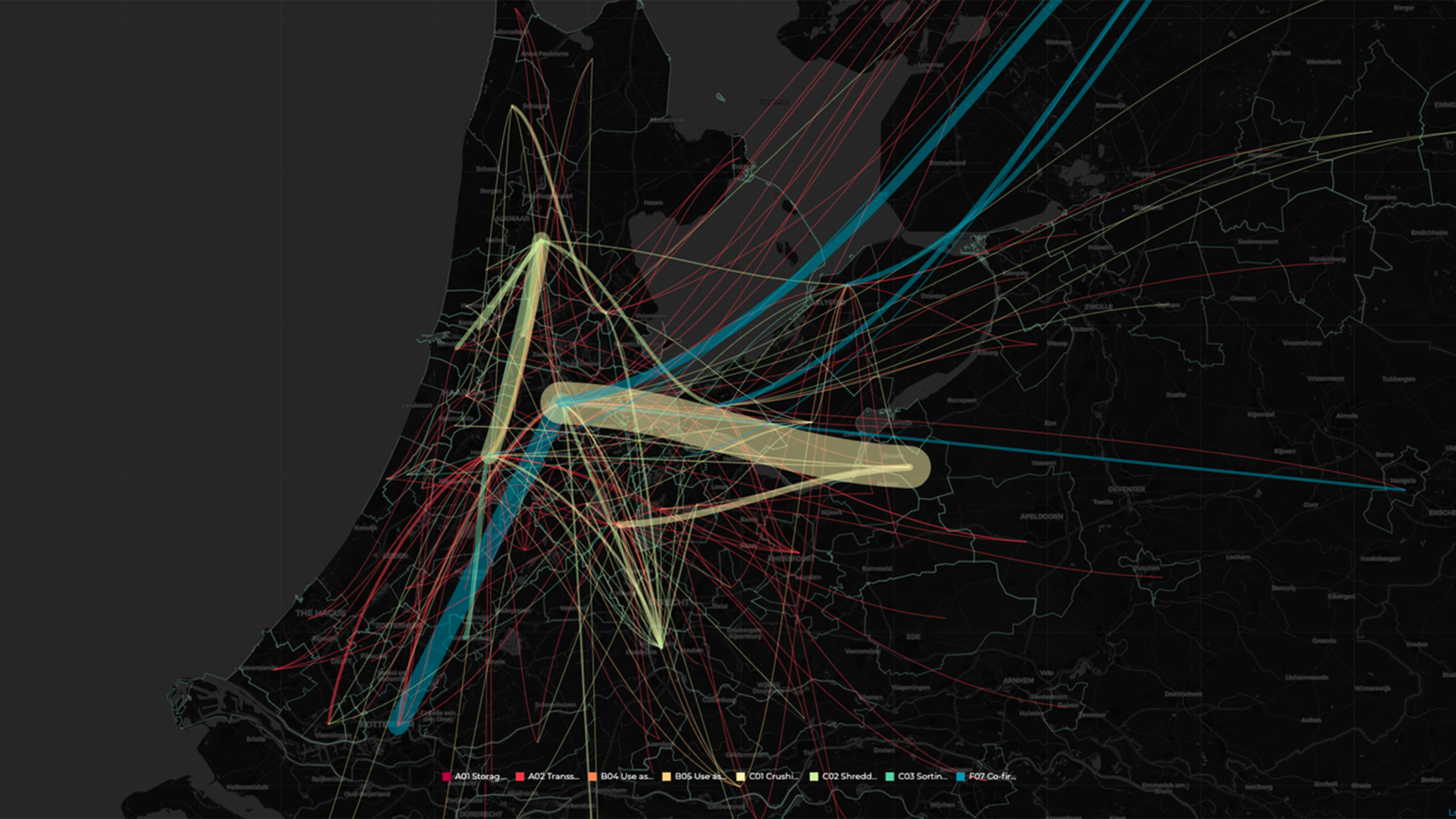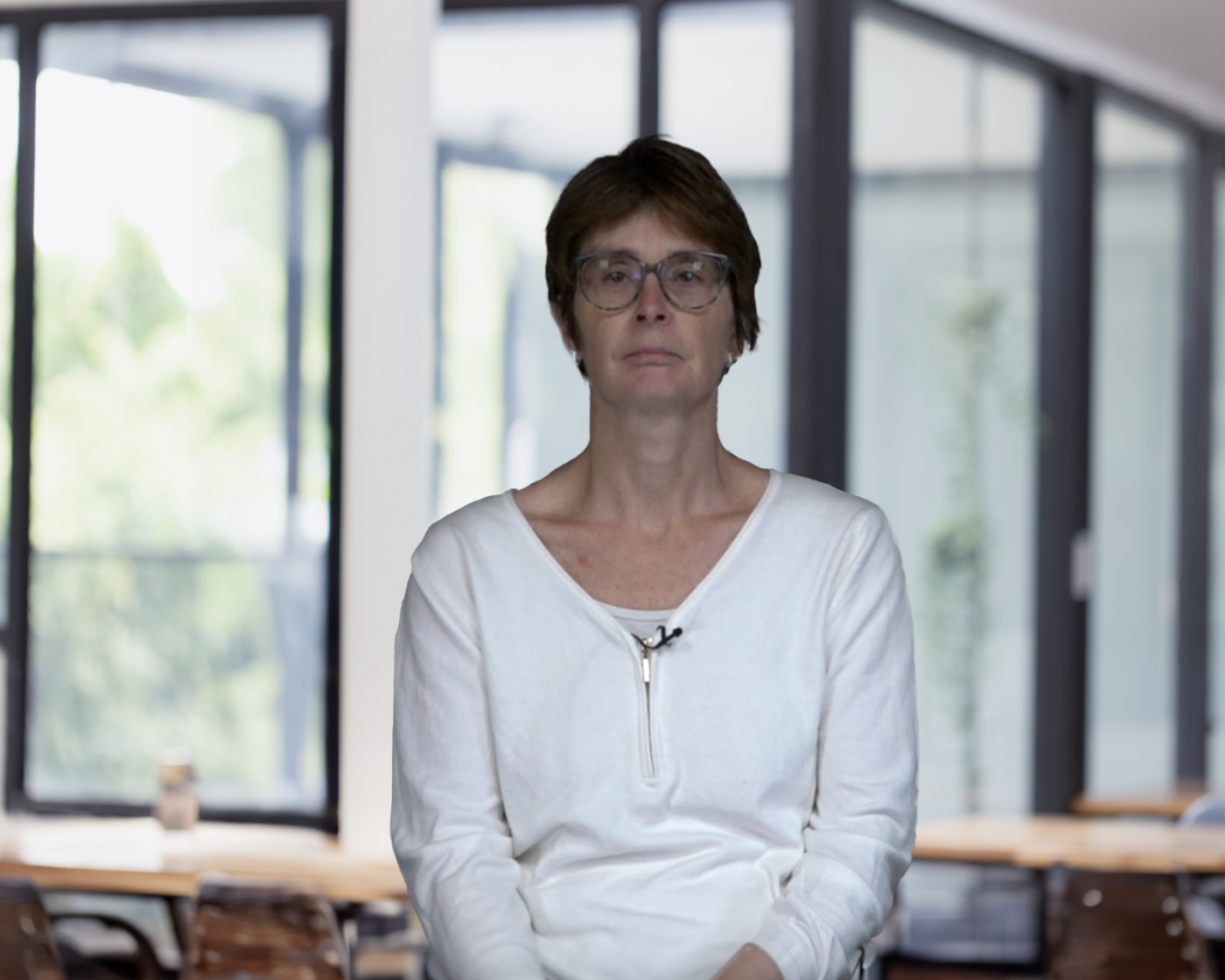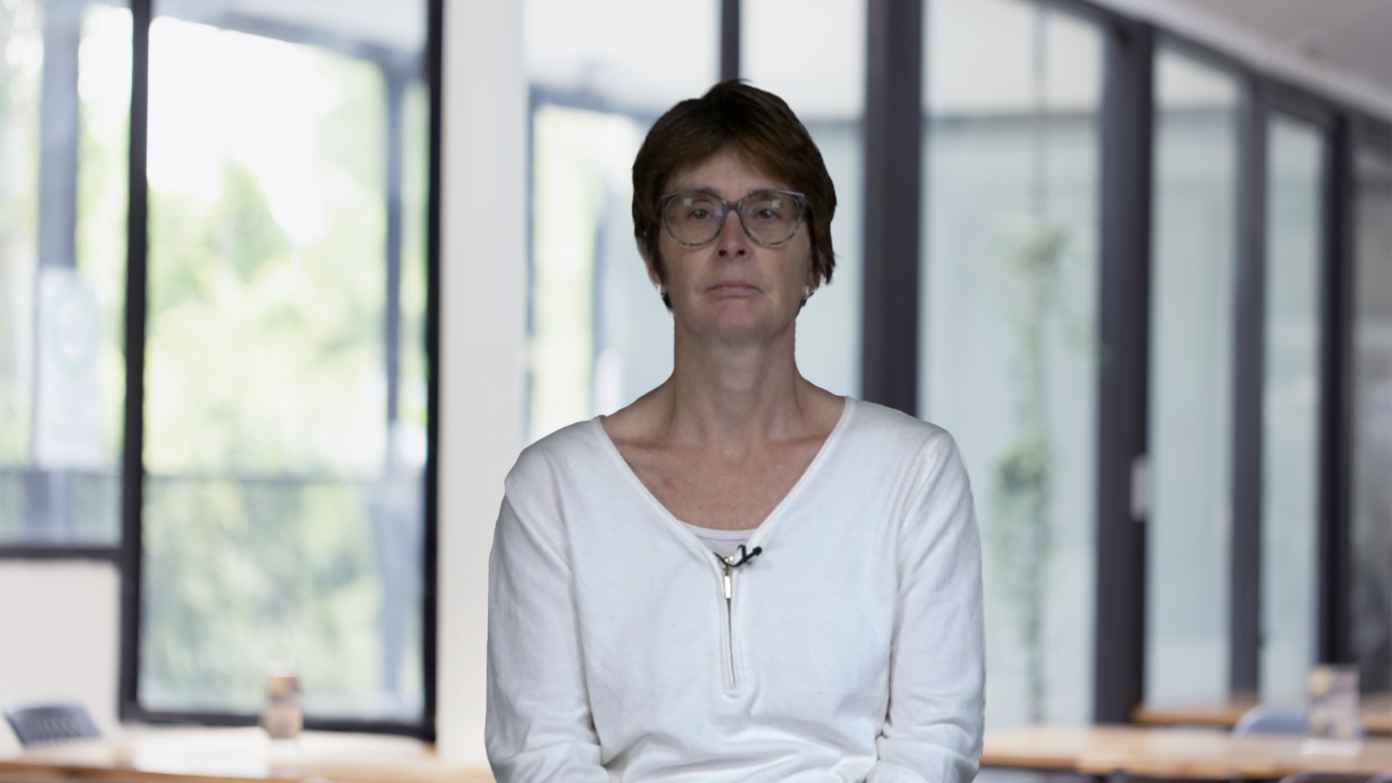Quantitative perspectives
From a quantitative perspective, urban metabolism can be defined as “the sum total of the technical and socio-economic processes that occur in cities, resulting in growth, production of energy and elimination of waste” (Kennedy, et al., 2007).
The first studies in urban metabolism were accounting exercises to calculate the total input, stock, and output of water, materials, nutrients, and waste of specific cities. There was less discussion on how the spatial aspects of the city (e.g. density, land use, proximity, accessibility) affected the location of these flows.
As urban metabolism developed, so did its approach to cities, resulting in a variety of spatial approaches. This includes mapping stocks and flows at a more detailed scale (such as buildings), and calculating eco-footprint of cities. Mapping stocks allows us to understand the location and amount of materials available in the city – embedded in the buildings we live in and the products we own. In a future of increasing material scarcity, this kind of information can allow us to locate and re-use existing materials embedded in our cities, reducing environmental impact and dependence on other countries for raw materials. This type of study can most often be seen in construction material stock mapping (Stephan & Athanassiadis, 2017) (Tanikawa et al., 2015). This is done by taking geo-located data on buildings in a city and estimating the amount of material available in each building based on its height, age, and function. The outcome is often a map that visualizes the availability of materials in different locations of a city, region, or even country as seen below.
The mapping of flows (See map below), on the other hand, includes visualization of material flows through a city or region. This can be done by visualizing geo-located material flow data, such as waste data or input-output tables on a map. With the help of these maps, governments can understand where most material flows are concentrated, as well as the locations and distances of material flows in and out of their region.
The quantitative perspective for urban metabolism can benefit from urban technology in many ways, especially since it has allowed for increased availability of location data on materials. For example, cadastre data, which records detailed information on real estate in a city (such as building height, age and function), can be used to estimate the availability of materials in a city in great detail. Waste data, collected by governments to monitor environmental impacts, can have additional location information, such as the addresses or postcodes of companies producing, processing, or reusing waste, allowing for the detailed mapping and analysis of waste flows.
A major challenge for quantitative urban metabolism is the availability and quality of geo-located material data. Data is often only available in highly developed countries, and even data generated by these countries (such as the Netherlands) have several limitations (Sileryte et al., 2022). A technical solution could be using image recognition machine learning methods to analyze satellite and google street view imagery to increase the accuracy of material location data
The political ecology perspective
Urban political ecology (UPE) adds a social layer to our understanding of urban metabolism by asking “who produces what kind of socio-ecological configurations for whom” (Swyngedouw 2006). The core belief of the subject is that technological advancements and optimizations of metabolic processes alone can’t solve today’s environmental challenges.
As an example, Cousin and Newell studied the water metabolism of Los Angeles to help the city increase its water supply and build resilience against climate change. First, they applied quantitative techniques to estimate the carbon footprint of each water source. The research found that the State Water Projects system requires massive amounts of energy to pump water over mountains, while the Los Angeles Aqueduct requires no pumping and hence no electricity. Therefore, the energy intensity numbers suggest the city should expand the Los Angeles Aqueduct. However, the analysis didn’t stop here. Then, the researchers applied the UPE framework to assess the impacts of urban metabolism beyond the city limits. They found that the water diversion for the Los Angeles Aqueduct created desertification and public health problems 400km away from the city in the water catchment area. The generated socio-ecological injustice outweighs any benefits from the expansion of the aqueduct and the researchers suggested other alternatives. This case proves why applying UPE, in addition to quantitative methods, is necessary to understand the intertwined interaction between the city and its hinterland.
While UPE is inherently qualitative and interaction-based, the new wave of data science tools definitely aids in data exploration. Many tools originally developed for political campaigns are finding fertile ground for discovering new correlations in cities. Clustering population data can help scientists break down cities into communities (Kahn 2021). Social media sentiment analysis can measure the impacts of policies replacing expensive surveys (Drijfhout 2016). Social physics can measure behavior in real-time (Pentland 2014). Machine learning can rank drivers of metabolic change and predict future changes (Peponi 2022). Despite its many benefits, “scholars in political ecology have long observed that technocentric approaches typically reduce complex human-environment relationships in ways that fail to account for social relations and power dynamics” (Nost 2022). For the time being, interviews remain the core methodology of UPE, but data science will help to ask the right questions from the right person.
The architecture-design-planning perspective
Most modern urban projects are planned on the local level with little regard for macro level impacts. However, we already know the city is not an autonomous entity, but the sum of intertwined environmental and social ecosystems reaching beyond administrative borders. Planners can’t ignore these connections because “the vitality of cities depends on spatial relationships with surrounding hinterlands and global resource webs” (Kennedy, et al., 2007, 56). Here’s where urban metabolism comes in handy again, helping us “to think in terms of relationships and re-constructed bonds between layers, instead of the conventional approach of breaking the city down along functional lines” (Bahers et al., 2022, 9). When designing policies, administrative boundaries are often the limits of the urban metabolism investigation and analysis. We need to break down these artificial boundaries because freely “territorializing urban metabolism can reveal the interconnections and dependencies between territories for resource extraction and manufacturing, as well as waste management” (Bahers et al., 2022, 9). The process of territorialising circularity can act as a medium to imagine alternative futures and to mediate between academic discourse, design and economic oriented and planning policies (Furlan et al., 2022, 46).
Nowadays, climate change, urban expansion, and demographic growth all challenge urban planners and designers to innovate faster than ever. As a result, the whole design process is being reshaped by AI and technology. On the policy level, we see innovation such as Réinventer Paris or the Algorithmic Register challenging the traditional planning process. On the planning level, we see AI assisted design creating more sustainable buildings in projects such as SpacemakerAI, Delve, and One Click CLA. In the construction phase, new materials like mass timber or 3D printed precast concrete hope to reduce the industry’s carbon footprint. In city operations, IoT sensors are providing live monitoring of for instance traffic and trash. On the consumer level, we’re seeing energy reductions thanks to projects such as the CRCLR house or the Nest Thermostat. Closing the loop, recycling is reshaped by innovations such as robotic arms and DIY plastic scanners. Technology by its nature creates efficiency, which is what we need to embed into a circular urban metabolism. Design and innovation together can modify demand and make consumers’ experiences more conscious and comfortable.
